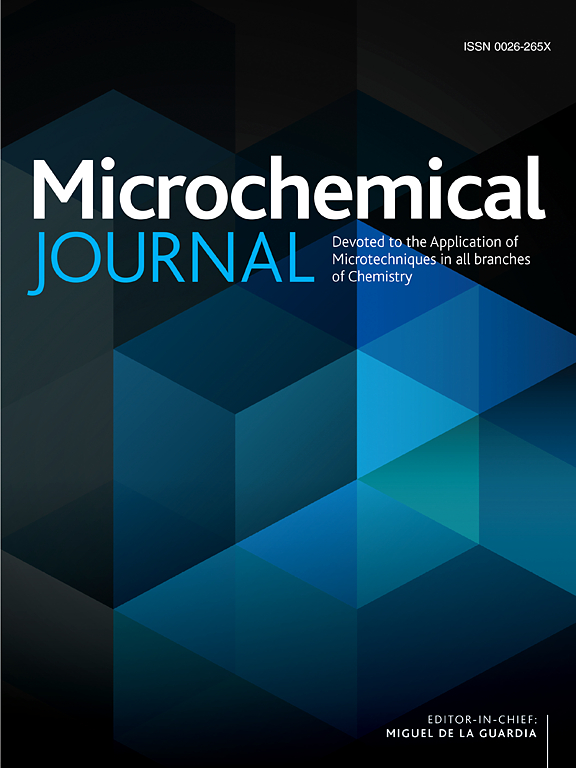Aggregation-induced emission based aptasensor for fluorescence sensing of E. coli O157:H7 in milk
IF 4.9
2区 化学
Q1 CHEMISTRY, ANALYTICAL
引用次数: 0
Abstract
E. coli O157:H7 is a representative foodborne pathogen, and diseases caused by it pose significant threats to human health. Rapid and accurate identification and detection of foodborne pathogens are effective strategies for preventing and controlling foodborne diseases. This study presented an aggregation-induced emission based aptasensor for rapid and highly sensitive detection of E. coli O157:H7 in milk. The fluorescent aptasensor was constructed by conjugating aptamer with sodium tetrakis(phenylethynyl)benzenesulfonate (TPE-(COOH)4Na) via π-π stacking interactions. In order to study the conformational changes of the aptamer, techniques such as circular dichroic spectroscopy, isothermal titration calorimetry and electrophoresis were used to characterize the aptamer. Under optimized conditions, the fluorescent aptasensor exhibited a linear detection range from 6.5 to 6.5 × 107 CFU/mL and achieved a low limit of detection (LOD) of 2.8 CFU/mL. The aptasensor demonstrated excellent selectivity toward E. coli O157:H7 and was successfully applied to detect E. coli O157:H7 in milk. This research provided valuable insights into bacterial contamination detection in dairy products and held promise for broad applications in food safety monitoring.

基于聚集诱导发射的牛奶中大肠杆菌O157:H7荧光传感的适体传感器
大肠杆菌O157:H7是食源性致病菌的代表,由其引起的疾病对人类健康构成重大威胁。快速、准确地识别和检测食源性病原体是预防和控制食源性疾病的有效策略。本研究提出了一种基于聚集诱导发射的适体传感器,用于快速、高灵敏度地检测牛奶中的大肠杆菌O157:H7。将适体与四(苯乙基)苯磺酸钠(TPE-(COOH)4Na)通过π-π堆叠相互作用偶联,构建荧光适体传感器。为了研究适配体的构象变化,采用了圆二向色光谱、等温滴定量热法和电泳等技术对适配体进行了表征。在优化条件下,荧光适体传感器的线性检测范围为6.5 ~ 6.5 × 107 CFU/mL,低检出限为2.8 CFU/mL。该传感器对大肠杆菌O157:H7具有良好的选择性,成功地应用于牛奶中大肠杆菌O157:H7的检测。该研究为乳制品中的细菌污染检测提供了有价值的见解,并有望在食品安全监测中得到广泛应用。
本文章由计算机程序翻译,如有差异,请以英文原文为准。
求助全文
约1分钟内获得全文
求助全文
来源期刊

Microchemical Journal
化学-分析化学
CiteScore
8.70
自引率
8.30%
发文量
1131
审稿时长
1.9 months
期刊介绍:
The Microchemical Journal is a peer reviewed journal devoted to all aspects and phases of analytical chemistry and chemical analysis. The Microchemical Journal publishes articles which are at the forefront of modern analytical chemistry and cover innovations in the techniques to the finest possible limits. This includes fundamental aspects, instrumentation, new developments, innovative and novel methods and applications including environmental and clinical field.
Traditional classical analytical methods such as spectrophotometry and titrimetry as well as established instrumentation methods such as flame and graphite furnace atomic absorption spectrometry, gas chromatography, and modified glassy or carbon electrode electrochemical methods will be considered, provided they show significant improvements and novelty compared to the established methods.
 求助内容:
求助内容: 应助结果提醒方式:
应助结果提醒方式:


